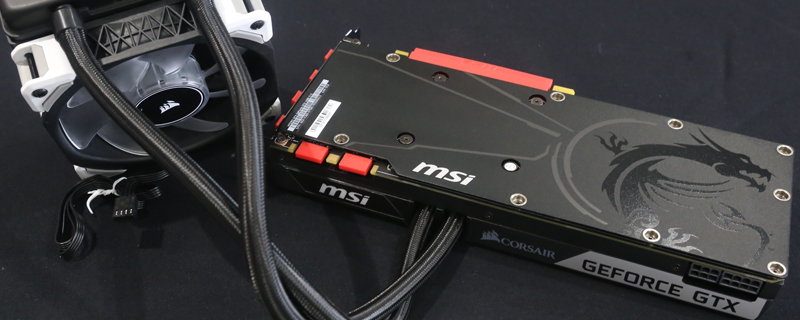Corsair Hydro GFX GTX 1080 Ti Review
Conclusion
The Corsair Hydro GFX was, in GTX 980 Ti trim, one of the best of that generation so it is no great surprise that they’ve built upon that success by bringing out a AIO equipped take upon the GTX 1080 Ti.
So successful has this been that, as you saw throughout our testing, if it wasn’t for the ASUS Poseidon it would have happily found a place as the best performing GTX 1080 Ti we’ve reviewed. Peak boost clock speeds were decent, although not at the insane heights one would imagine when looking at our results, but the excellent thermal performance means that the boost clocks were able to be maintained for longer, giving higher average boost clock speeds and therefore excellent average frame rates.
The only place in which we didn’t see results that either hit our predictions nor matched up to what it was truly capable of where the Futuremark ones. Both 3D Mark and VR Mark had a very disappointing set of results, with the Hydro GFX far below what our gaming results, and even Unigine results, would lead us to expect. Although in this particular case it’s slightly disappointing, it does nonetheless reinforce the adage we hold dear here at OC3D, namely that you shouldn’t place too much emphasis nor stock in the capabilities of a product in theoretical synthetic benchmark situations, but instead should look at how it performs in things more closely related to the use you intend. With the Corsair Hydro GFX therefore we wouldn’t recommend that you use it in an attempt to break any 3D Mark world records, but if you plan to use it as a graphics card to power the latest AAA titles – so pretty much everyone then – it will be just the ticket.
As we saw in our temperature testing you can tweak the fan speed of the Hydro between a wide range of figures. Whilst it is, just about, possible to run the card at 500 RPM we think if you plan to do more than just sit on your desktop then at least 1000 RPM should be the target. Equally although 2500 RPM gives you frosty temperatures the noise level naturally increases to a level we wouldn’t want to live with forever. Best of all is 1200 RPM, where you get the cool temperatures that let the card boost to lovely levels without the noise inherent to a fast fan speed.
About the only negative we have is the rather plain design of the card. It is a GTX 1080 Ti with a Corsair AIO installed upon it, and that is exactly what it looks like. As the shroud is largely aesthetic here because the cooling is done externally then we were hoping Corsair would push the boat out and give us something impossible when fans are in the way. But no. Can’t win them all we suppose.
If you want a GTX 1080 Ti and want one which is cool and quieter than a multi-fan solution then the Corsair Hydro GFX is exactly the card for you, with results as good as anything else we’ve tested. Lovely.
Discuss your thoughts about the Corsair Hydro GFX GTX 1080 Ti Review on the OC3D Forums.




